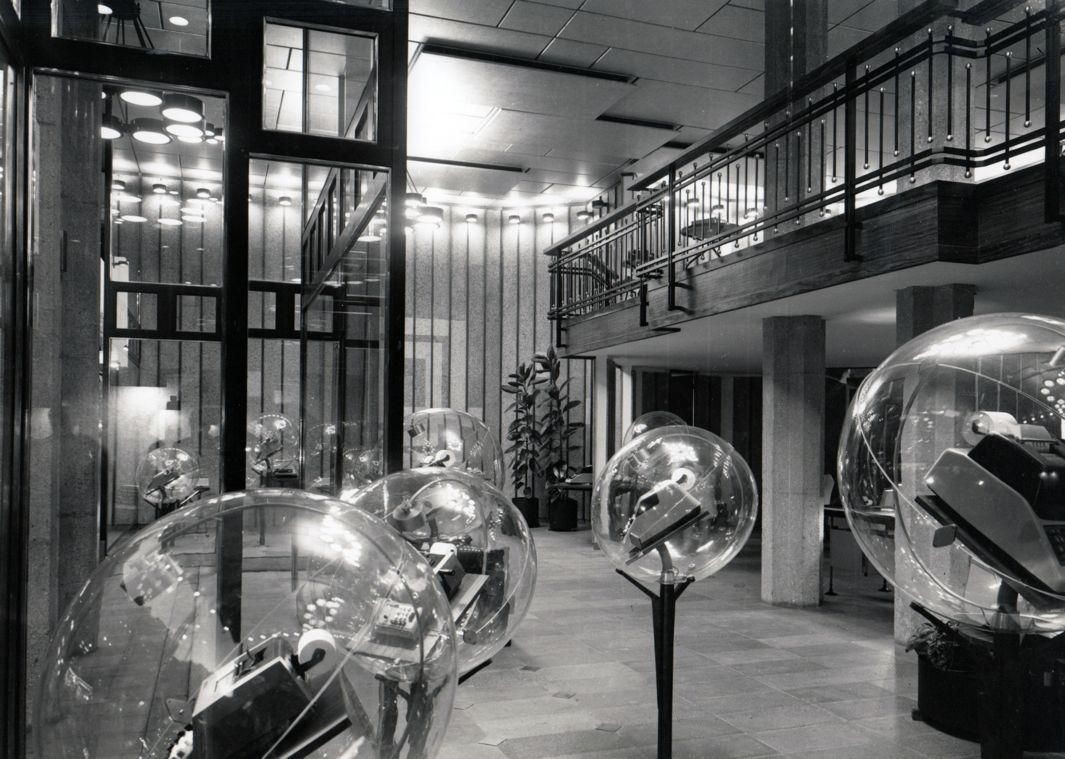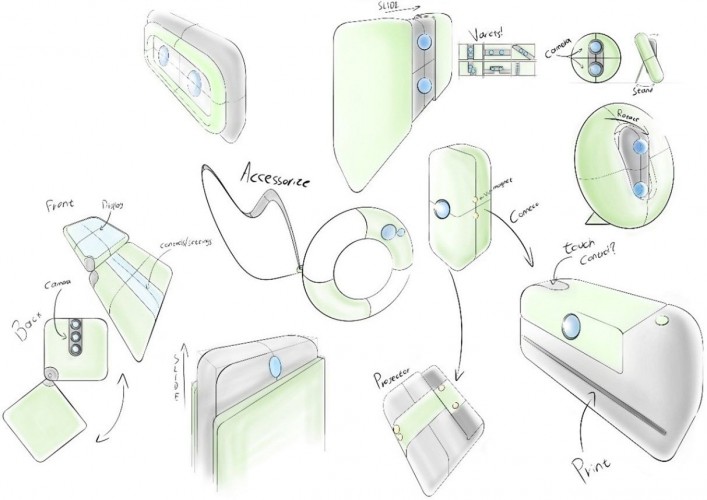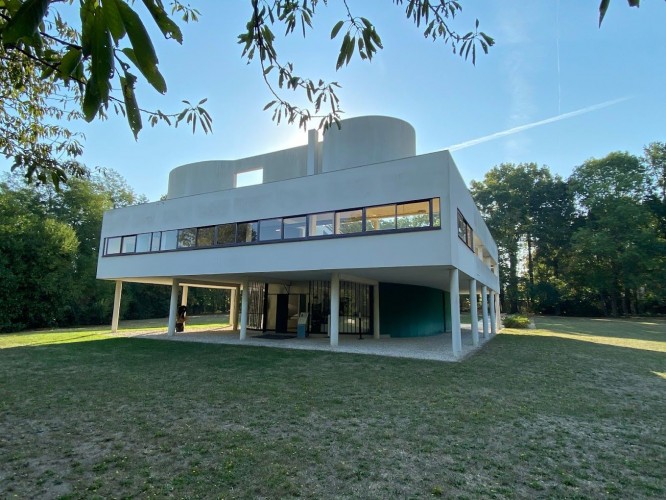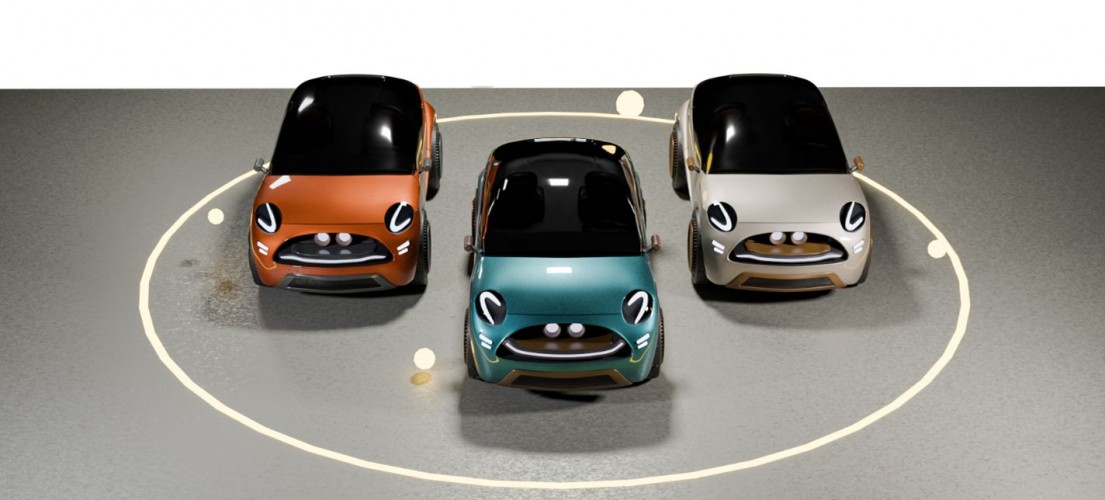Olivetti: Η ιστορία της εμβληματικής εταιρείας φορητών γραφομηχανών που καθόρισε την παγκόσμια πορεία του design.
DS.WRITER:
Sophia Throuvala
Κεντρική Εικόνα: ICA: Olivetti Showroom, Barcelona, designed by BBPR (1965). | Photo: F. Català Roca, courtesy of Navone Associati, Milan itsnicethat.com
Olivetti ονομάζεται το brand που καθόρισε το design στον χώρο της τεχνολογίας αλλά και του marketing και της πληροφορικής. Στα 114 χρόνια που μετρά στην αγορά, έχει καταφέρει να ενώσει όλους τους δημιουργικούς κλάδους προκειμένου να προωθήσει την εξατομικευμένη εμπειρία της τεχνολογίας και της επικοινωνίας μέσω του design. Από τις απαρχές της ιστορίας του σύγχρονου design αλλά και των “εργασιακών” συσκευών, όπως της γραφομηχανής, η Olivetti μετατρέπει το χρηστικό σε κάτι αισθητικά άρτιο, δηλαδή σε μία σύγχρονη εμπειρία. Από τον σχεδιασμό στην παρουσίαση και τελικά στην πώληση, η Olivetti θριάμβευσε αφήνοντας για πάντα το στίγμα της στον χώρο του design.
Το εργοστάσιο γραφομηχανών Olivetti ιδρύεται στην Ivrea (κοντά στο Τορίνο) της Ιταλίας το 1908, από τον Ιταλοεβραίο Camillo Olivetti. Μέσα σε μερικές δεκαετίες, όταν πια περνά στα χέρια του γιου του Adriano, κατακτά τον βιομηχανικό κόσμο ως η πλέον καινοτόμα και επιτυχημένη εταιρεία παραγωγής προηγμένων συστημάτων, συστήνοντας κιόλας τη δεκαετία του ’30 την πρώτη αυτόματη και φορητή γραφομηχανή.
Ο Adriano, αν και μηχανικός στο επάγγελμα, είχε μεγάλη αγάπη για τις τέχνες και συγκεκριμένα για την αρχιτεκτονική και το design, το οποίο ήταν ακόμα “φρέσκο” στη Ιταλία αλλά και γενικότερα. Μάλιστα, ο Adriano θα μπορούσε να θεωρηθεί ως ένας από τους “προφήτες” του είδους, καθώς, συνταιριάζοντας τον φονξιοναλισμό της μοντερνιστικής αρχιτεκτονικής και του Bauhaus με μια νέα φιλοσοφία παραγωγής, δημιούργησε αντικείμενα χρηστικά και κομψά τα οποία μάλιστα συνήθιζε να εκθέτει μουσειακά.
.jpeg)
Πηγή: ilcontrafforte.com
Συγκεκριμένα, το design μπαίνει στο λεξιλόγιο των ιταλικών εικαστικών τεχνών μόλις το 1954 (δηλαδή 21 χρόνια μετά τη γραφομηχανή του Ολιβέττι) στην Trienale X, και για πρώτη φορά διαφοροποιείται σαφώς από τις διακοσμητικές τέχνες όπως λέγονταν (Arts Décoratifs), σε κάτι νέο μεταξύ διακόσμησης, γλυπτικής, αρχιτεκτονικής και βιομηχανικής παραγωγής. Αφορμή για αυτή τη νέα κατηγοριοποίηση στάθηκε το "labirinto dei ragazzi" των BBPR, μιας ομάδας τεσσάρων εμβληματικών Ιταλών αρχιτεκτόνων, στους οποίους θα επιστρέψουμε παρακάτω.
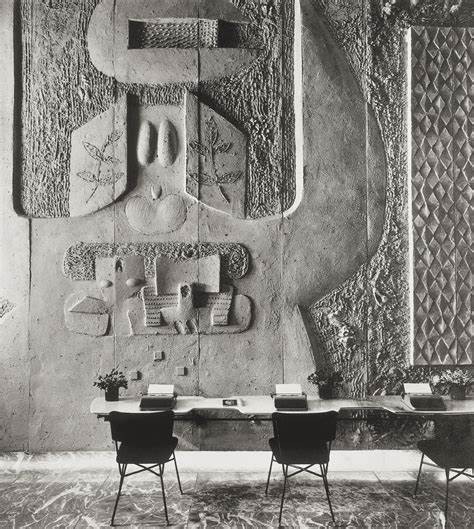
Olivetti Showroom, New York Decorazione Murale di Costantino Nivola -1954 | Πηγή: ilcontrafforte.com
Ο Ολιβέττι, εμπνευσμένος από τον μοντερνισμό και από τα μανιφέστα της νεωτερικότητας, θέλει να μεταμορφώσει το εργοστάσιο του πατέρα του σε έναν χώρο πολιτισμού, τη λεγόμενη “πόλη του ανθρώπου”. Ιδεολογικά αντίθετος με τον καπιταλισμό και τον Τεϊλορισμό, προσπαθεί να χτίσει ένα νέο σύστημα παραγωγής, το οποίο εύχεται να σταθεί ικανό να αλλάξει εκ των έσω τον βιομηχανικό κόσμο. Στα πλαίσια της αναδιοργάνωσης του συστήματος παραγωγής, ο Ολιβέττι εντάσσει την τέχνη με έναν τρόπο που δεν είχε προηγούμενο. Συγκεκριμένα, το 1931, επισκέπτεται τη Σοβιετική Ένωση για να μελετήσει το παραγωγικό μοτίβο του κομμουνισμού, και επιστρέφοντας στην Ιταλία αποφασίζει πως πρέπει να δημιουργήσει τμήμα marketing και επικοινωνίας, δηλαδή γραφιστικό τμήμα, εμπνευσμένος από τις ρωσικές αφίσες. Για αυτό τον σκοπό, προσλαμβάνει σημαντικότατους καλλιτέχνες όπως τον Luigi Μunari, τον Ettore Sottsass, τον Luigi Veronesi και τον Gianni Pintori, κυρίως για τη δημιουργία των διαφημιστικών αφισών και της καμπάνιας, ενώ επίσης στο γκρουπ εντάσσει, μεταξύ άλλων, τον γραφίστα και αρχιτέκτονα Marcello Nizzoli, ο οποίος σχεδιάζει το outline των διάσημων γραφομηχανών.
Σε επίπεδο διοίκησης, οργανώνει διευθυντικά τμήματα και προσφέρει σε όλους τους εργαζόμενους, ανεξαιρέτως, στέγη για αυτούς και τις οικογένειές τους, ενώ επίσης μειώνει τις ώρες εργασίας και αυξάνει τις αποδοχές, τα επιδόματα και τις παρεχόμενες κοινωνικές υπηρεσίες στους υπαλλήλους του, με αποτέλεσμα την αύξηση της παραγωγικότητάς τους, συνεπαγωγικά τις πωλήσεις και την έλλειψη διαπληκτισμών στους χώρους εργασίας. Για τη στέγαση τόσο των εργαζομένων όσο και των γραφομηχανών του, ο Ολιβέττι προχωρά σε συνεργασίες με πασίγνωστους αρχιτέκτονες, οι οποίοι καλούνται να υλοποιήσουν το ουρμπανιστικό κοινοτικό όραμα του βιομηχάνου και να νοηματοδοτήσουν μέσω της αρχιτεκτονικής τα όσα ο Ολιβέττι πρέσβευε. Μεταξύ άλλων, οι εργατικές κατοικίες ήταν “πράσινες”, καθώς διέθεταν χώρους καλλιέργειας αλλά και αναψυχής, ενώ επίσης παρέχονταν χώροι μόρφωσης όπως αναγνωστήρια, βιβλιοθήκες και αίθουσες εκδηλώσεων, στις οποίες γίνονταν συζητήσεις ποίησης και κινηματογράφου, με καλεσμένους όπως τον Pier Paolo Pasolini και τον Paolo Volponi. Όπως ο Ολιβέττι πίστευε, η διαπαιδαγώγηση των εργαζομένων και η επαφή τους με την τέχνη ήταν ο πρωταρχικός τομέας παραγωγής, κι έτσι οι χώροι όπως το Centro Studi του Edoardo Vittoria δομήθηκαν βάσει αυτής της λογικής, αφήνοντας χώρο στην προσωπική εξέλιξη και ευτυχία των διαμενόντων.
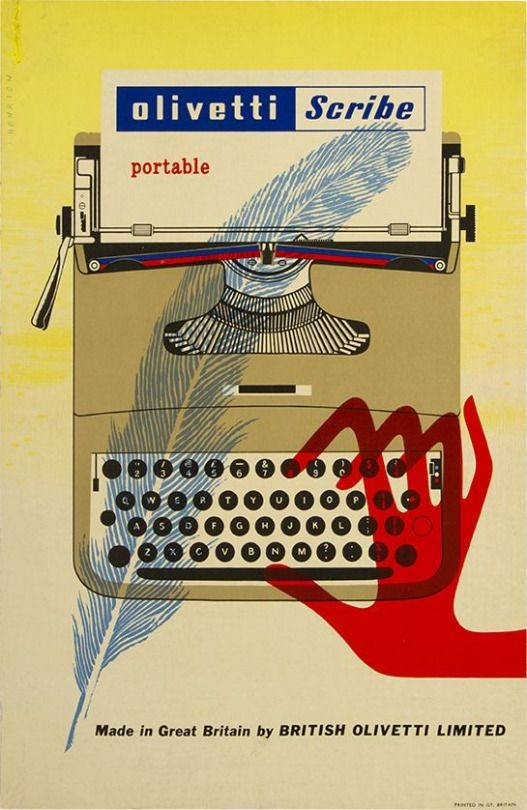
Πηγή: gr.pinterest.com
Την 22η Οκτώβρη του 1952, το Μουσείο Μοντέρνας Τέχνης της Νέας Υόρκης διοργανώνει την έκθεση “OLIVETTI: DESIGN IN INDUSTRY”, με αφαιρετικές φωτογραφίες, αρχιτεκτονικές μακέτες, αντικείμενα και έγγραφα της βιομηχανίας Olivetti. Τα ονόματα των σημαντικότερων, κυρίως Ιταλών, αρχιτεκτόνων και εικαστικών συντονίζονται για πρώτη φορά σε μια ιστορική έκθεση αποκλειστικά για το design. Όπως αναγράφεται στην πρόσκληση-δελτίο τύπου του ΜοΜΑ, “Σκοπός της έκθεσης είναι να ενθαρρύνει τις αμερικανικές βιομηχανίες να ακολουθήσουν το παράδειγμα της Olivetti στην οργάνωση όλων των οπτικών πτυχών της παραγωγής, υπό ενός ενιαίου υψηλού σχεδιαστικού γούστου”. Μέσα σε μόλις δύο δεκαετίες, η Olivetti αποτελεί παράδειγμα στον χώρο του design, ενώ επιτυγχάνει να ενταχθεί σε ένα από τα σημαντικότερα μουσεία τέχνης στον κόσμο.
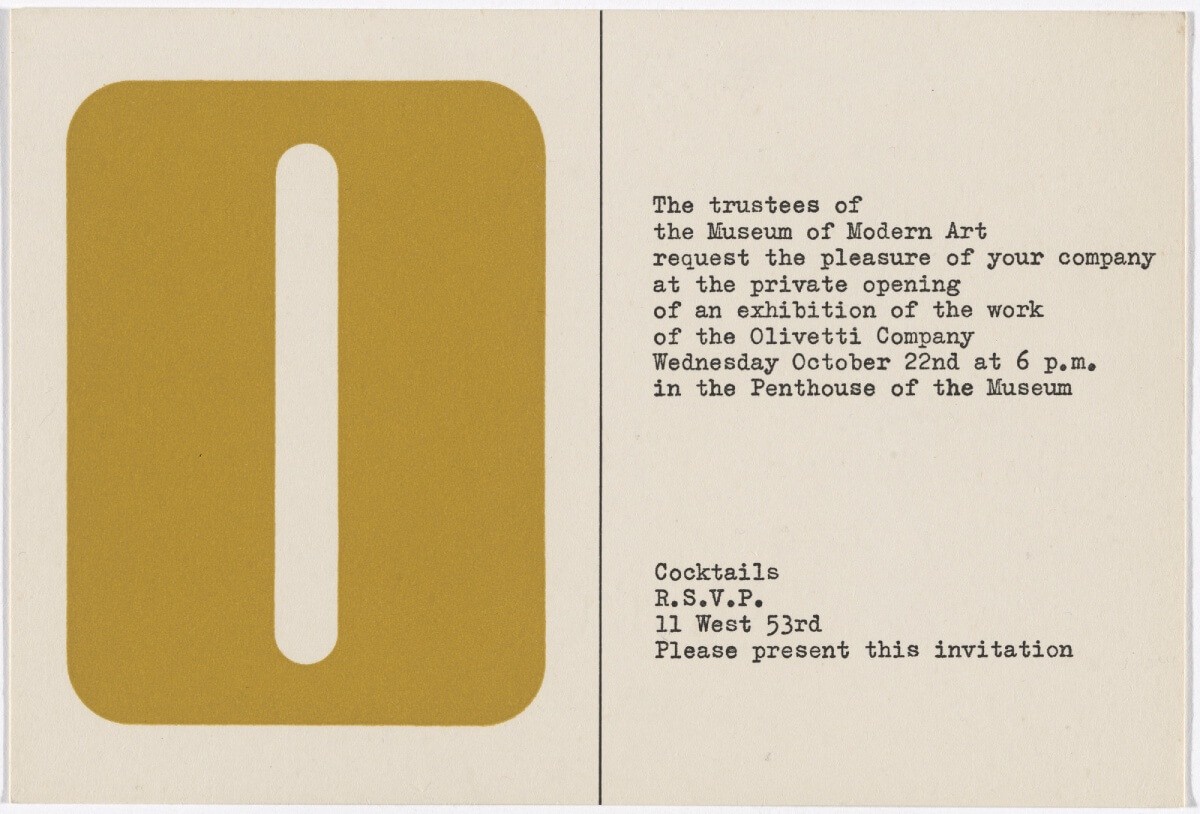
Invitation to a private opening of the exhibition | Πηγή: "Olivetti: Design in Industry" on October 22nd, 1952
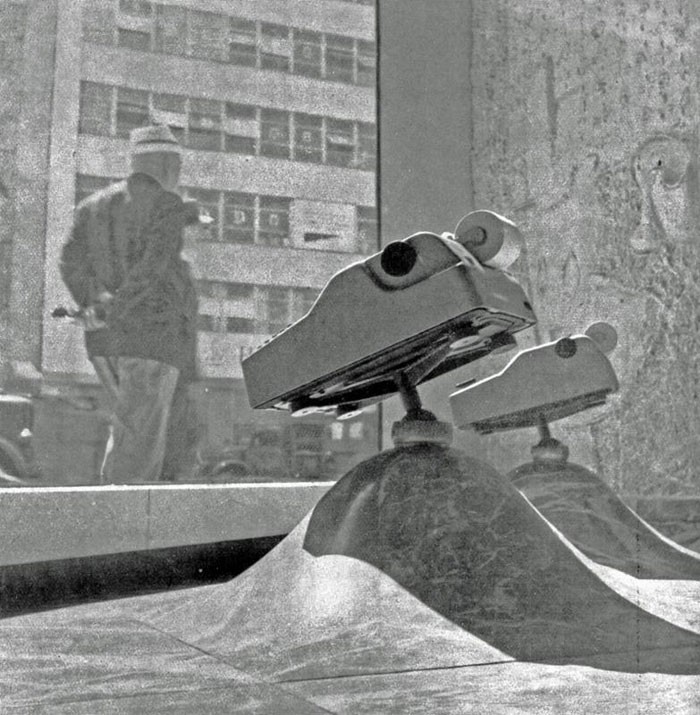
Olivetti Showroom, New York Area espositiva, 1954 | Πηγή: web.archive.org
Έχοντας ήδη καταστήματα στο Παρίσι, τη Βιέννη, το Λονδίνο, τις Βρυξέλλες, το Γιοχάνεσμπουργκ, το Μπουένος Άιρες, το Μεξικό και φυσικά το Τορίνο, η Olivetti ανοίγει το ιστορικό νεοϋορκέζικο παράρτημα στον σημαντικότερο δρόμο του Μανχάταν, στην 5η Λεωφόρο, ενάμιση χρόνο μετά την έκθεση στο ΜοΜΑ. Τον σχεδιασμό του καταστήματος αναλαμβάνει το Μιλανέζικο αρχιτεκτονικό στούντιο BBPR (Gian Luigi Banfi, Ernesto Rogers, Enrico Peressutti και Lodovico Barbiano di Belgiojoso), ενώ η εσωτερική διακόσμηση ανατίθεται στον διάσημο Ιταλό γλύπτη Costantino Nivola, ο οποίος δημιουργεί στους τοίχους τα γνωστά μπρουταλιστικά ανάγλυφά του με την τεχνική του sand-casting. Τέλος, οι διάσημες γραφομηχανές εκτίθενται μουσειακά, σαν να πρόκειται για γλυπτά και όχι βιομηχανικά προϊόντα, τοποθετημένες σε μαρμάρινες βάσεις, ολοκληρώνοντας έτσι το όραμα του Adriano για έναν ατέρμονο συγκερασμό τέχνης και βιομηχανικής παραγωγής, δημιουργώντας μια κουλτούρα design που ακόμα επηρεάζει και εμπνέει.
Αμέσως μετά, ο Carlo Scarpa αναλαμβάνει να σχεδιάσει το εμβληματικό παράρτημα της Olivetti στη Βενετία πάνω στην Piazza San Marco, ενώ για το εργοστάσιο του Μιλάνου καλείται ο ίδιος ο Le Corbusier. Μετά τον ξαφνικό θάνατο του Adriano το 1960, η εταιρεία περνά στα χέρια του υιού του Roberto, ο οποίος συνεχίζει να στηρίζει και να προωθεί το όραμα του πατέρα του για μια πρωταρχικά πολιτιστική και πολιτισμένη βιομηχανία. Συγκαλεί εικαστικά και γλυπτικά συμπόσια και συνέδρια, και οργανώνει design workshops στα οποία συμμετέχουν καλλιτέχνες από το Gruppo T και το Gruppo N. Η στρατηγική της Olivetti είναι ακόμα βασική πηγή έμπνευσης για μικρά και μεγάλα studio design ανά τον κόσμο, τα οποία θέλουν η βιομηχανική παραγωγή να αγκαλιάζει την καλλιτεχνική σκέψη και τη λειτουργικότητα, σε ένα περιβάλλον συνεργατικότητας και συνεχόμενης εξέλιξης. Αυτό είναι που κάνει τη μορφή και τη φιλοσοφία του Adriano Olivetti πατρική στον χώρο του design, και ο λόγος για τον οποίο η καινοτόμα οπτική του παραμένει από διαχρονική έως και πρότυπη. Σήμερα, τα γνωστά ιταλικά βραβεία design “Olivetti Design Contest” φέρουν το όνομα του brand. Αποδίδονται ετησίως στην Ιβρέα -γενέτειρα του οίκου-, προς τιμήν της μακροβιότατης πορείας του στον χώρο του σχεδιασμού και της πώλησης νέων τεχνολογιών.
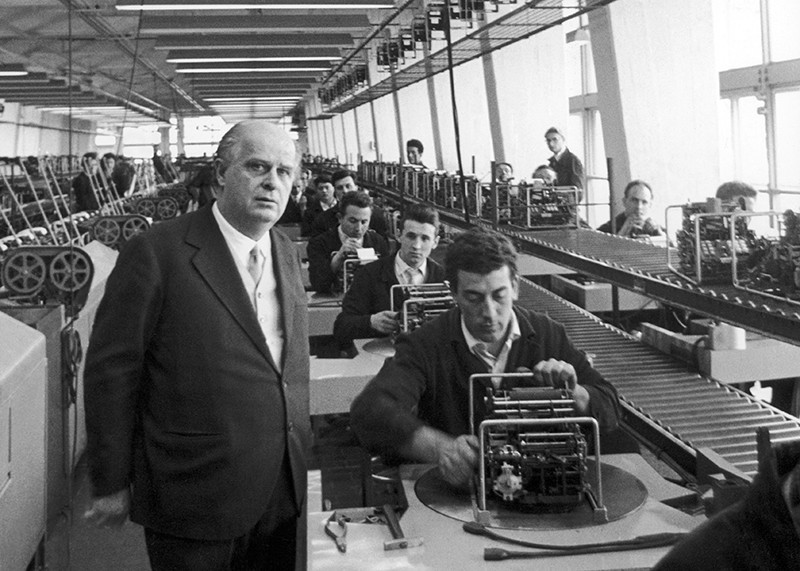
Adriano Olivetti and Olivetti’s workers | Πηγή: italysegreta.com
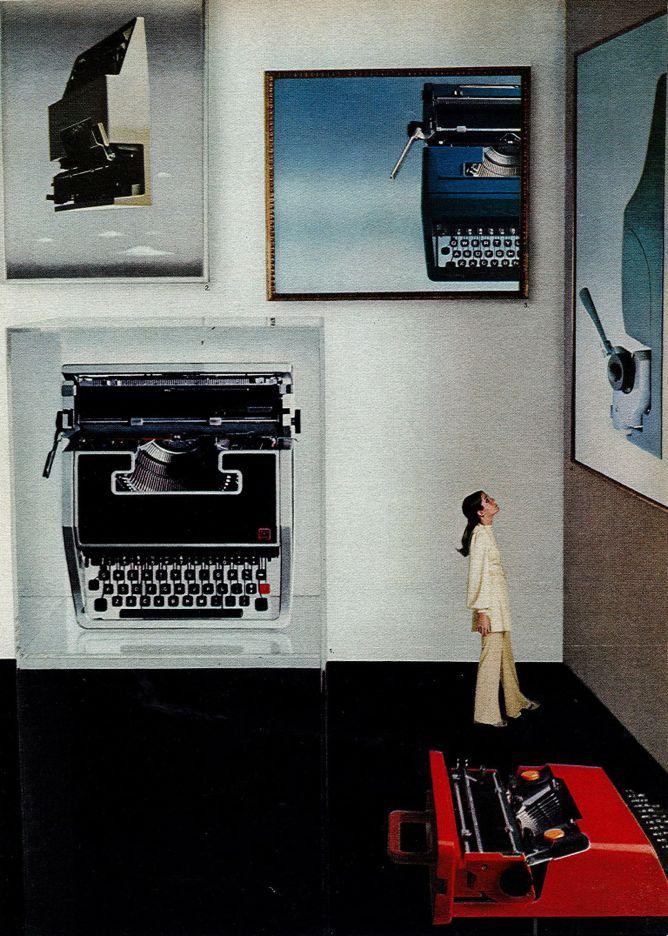
ICA: Advertisement for Olivetti typewriters including Valentine, designed by American photographer and graphic designer Henry Wolf, 1969 | Πηγή: itsnicethat.com
Further reading:
https://artsandculture.google.com/story/6wXBDRl7u63FKQ
https://www.nytimes.com/2013/02/11/arts/design/olivettis-artful-breakthroughs.html
https://italysegreta.com/the-utopist-visions-of-adriano-olivetti-designed-ideas-history/
https://www.raiplay.it/video/2011/11/Adriano-Olivetti-cc8b8c14-8c12-469a-9543-a14ab125e77f.html
https://www.storiaolivetti.it/articolo/89-il-design-dei-prodotti-olivetti/
https://www.storiaolivetti.it/tema/architetture/
https://it.wikipedia.org/wiki/Negozio_Olivetti_(Venezia)
https://it.wikipedia.org/wiki/Negozio_Olivetti_(New_York)
https://artsandculture.google.com/story/-wUh8lOLDPHLIg




